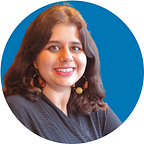<Insert Caption Here>
A design thinking event where we used Lightning Decision Jam to come up with our next design event at Srishti ACM SIGCHI Student Chapter!
Srishti Institute ACM SIGCHI student chapter provides a platform where peer-to-peer learning happens at intersections of Design, Technology and Art. However, there seems to a general misconception that we are just all about computers and “intimidating techie stuff”. We wanted to work with people from different backgrounds in design in order to help foster a culture of collaboration and inclusion in design learning and making at Srishti across all design disciplines.
On 8th March 2019, I facilitated a design thinking workshop titled “Insert Caption Here”. We followed The Lightning Decision Jam workshop exercise by AJ&Smart. It was a participatory design activity for the students of Srishti that was inclusive while giving agency to envision and decide the next design event.
The Question
The objective of the event was to come up with our next design event that allows students at Srishti to bridge gaps in their learning experience.
The Result
The resultant solution from the activity was:
A Portfolio Festival which is a series of events in an open space where people from different disciplines can come together and work on a series of micro-projects.
The Process
Following AJ and Smart’s Lightning Decision Jam Framework in our own way, we followed the following process in the workshop conducted:
Step 1 :
We made a boat called “Srishti Express” which had a sail and an anchor.
Step 2:
Starting on a positive note, We gave the participants blue sticky notes and 4 minutes and they wrote what they felt they are really learning and gaining from their time at Srishti. These notes went in the sail area.
Step 3:
We gave the participants another set of blue sticky notes and 4 minutes and this time they wrote what they felt are major gaps in their learning experience at Srishti. This went up on the board in the area where the anchor was parked in the sea.
Step 4:
Participants were given sticky dots and 5 minutes and they voted on each other's sticky notes-the issues that they felt were most pressing.
Step 5:
The facilitator arranged sticky notes with the problem areas in order of votes.
Step 6:
We took the topmost sticky notes and formulated a How might we question form the same: “ HMW foster a culture of collaboration through helping our peers learn necessary skills that Srishti doesn’t always emphasise?”
Step 7:
The participants were given 5 minutes and pink sticky notes to come up with solutions for the HMW question formulated.
Step 8:
Participants were given sticky dots and 5 minutes and they voted on each other's sticky notes-the solutions they thought that would be most effective.
Step 9:
The facilitator once again arranged the voted solutions in order of priority.
Step 10:
The ones voted 3 sticky dots or more were plotted on an impact-effort graph by the facilitator based on discussion with the participants.
Step 10:
The solutions we found falling in the “Low effort” and “High impact” region of the graph was put together as a final solution. We gave the solution a name: “Portfolio festival” which would be a series of events in an open space where people from different disciplines can come together and work on a series of micro-projects.
Step 11:
The participants brainstormed the steps necessary to execute the solution that we arrived at. Prioritizing the steps in order of importance was also done.
1- Collecting information on what can be done and what students want to learn as research to design such kind of event.
2- Figuring out a platform where all the micro-projects made during the festivals can gain an audience (social media, website, etc)
3-Figuring out a schedule that fits well into the potential participants’ goals at Srishti and beyond Srishti as well.
-Having a fallback option for the participants in terms of lack of team members or expertise needed for the projects
4- Having a system to put all necessary information and updates in one space (for example- a website)
Special Thanks to N Chandrasekhar Ramanujan, Arun Koushik, Pranjal Jain, Sweta Bisht, Jahnvi Vegad for making this happen!
